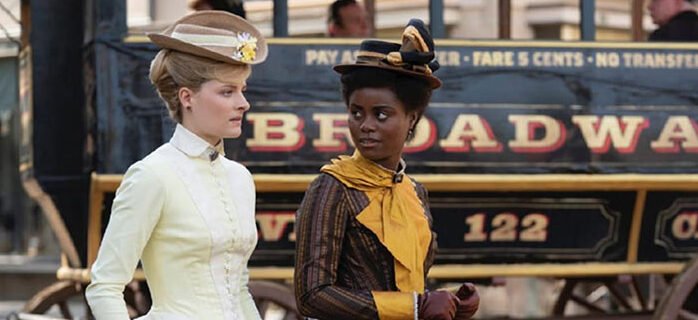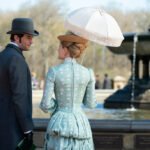HBO’s The Gilded Age sweeps viewers into the grandeur of 1880s New York City — a time of lavish wealth, ruthless ambition, and strict social codes. But while the show is set in Manhattan, much of its visual splendor comes from carefully chosen locations across New York State and Rhode Island, where real-life Gilded Age mansions and historic streets double as the homes and haunts of the fictional Russell and van Rhijn families.
Let’s step into the real locations behind the world of The Gilded Age and discover how — and where — you can experience this history for yourself.
Newport, Rhode Island: Where the Rich Really Played
If you’ve found yourself mesmerized by the Russells’ massive ballroom or the soaring staircases of the Astors’ home, you’ve already seen Newport — the crown jewel of Gilded Age architecture. Many of the show’s most extravagant interiors were filmed inside Newport’s famed summer “cottages,” once owned by America’s richest families.
The Breakers, the grand Vanderbilt estate, provided the Russells’ showstopping ballroom and game rooms. Scenes that capture Bertha Russell’s hunger for social ascent were filmed right in its gold-adorned halls. Meanwhile, Marble House, another Vanderbilt mansion, inspired the sweeping staircases of the Russell residence. The Elms became the Russells’ Newport retreat, offering its kitchen, drawing rooms, and bedroom spaces for filming.
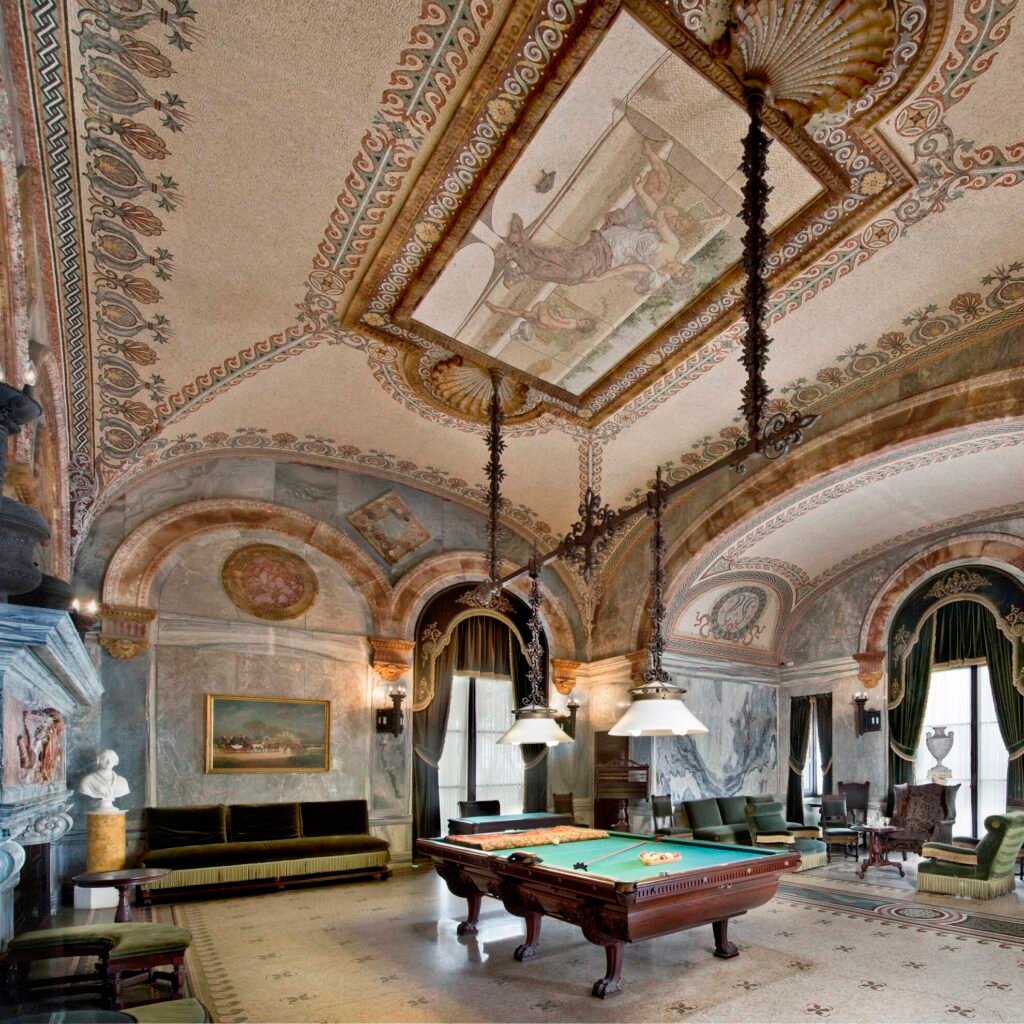
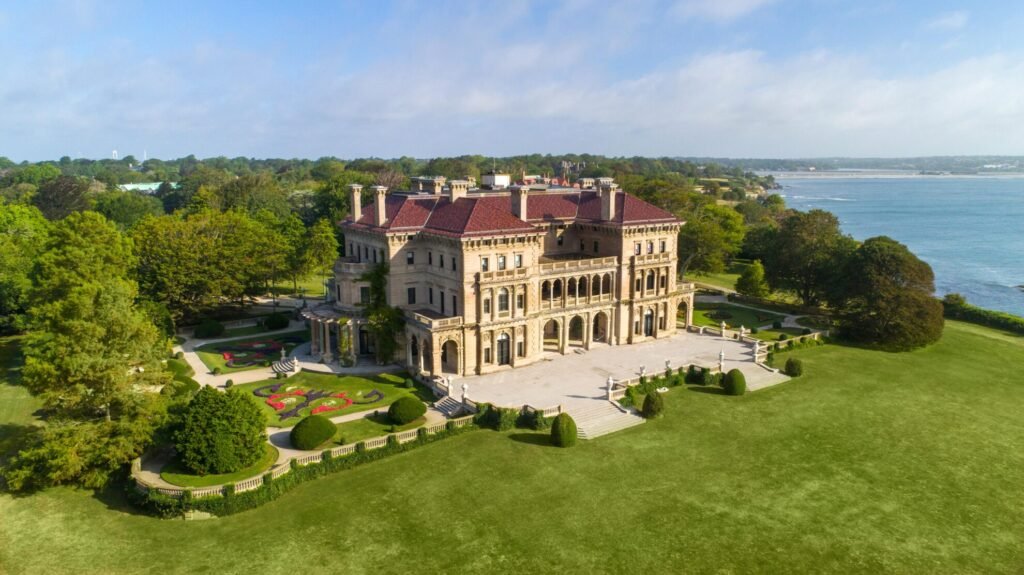
One of the most interesting filming locations is Château-sur-Mer. Though less ostentatious than the others, its interiors were used for a range of settings, including Agnes van Rhijn’s bedroom and even Oscar van Rhijn’s apartment. Rosecliff, with its airy ballroom and romantic architecture, appears as the home of Mrs. Chamberlain. And Kingscote — smaller and more modest — becomes the home of Susan Blane, showing that even among Newport’s wealthy, there were different levels of affluence.
All of these homes are open to the public through the Preservation Society of Newport County. A visit to Newport is like stepping directly into the world of The Gilded Age, with tours available year-round that include the very rooms where Bertha and George Russell made their mark.
Troy, New York: Old New York, Preserved
While Newport stood in for interiors, the bustling streets of 1880s Manhattan were brought to life in the upstate city of Troy. With its preserved 19th-century brownstones and wide avenues, Troy is a filmmaker’s dream. River Street and Monument Square were transformed into Fifth Avenue and Madison Square, lined with horse-drawn carriages and elegant shopfronts.
The production team dressed entire blocks in period decor, and many of the outdoor interactions — from Marian’s walks through the city to street confrontations — were filmed here. Even the parks and church scenes in early episodes owe their authenticity to Troy’s historically rich cityscape.
Albany and Schenectady also played supporting roles, providing opera house backdrops and quiet side-street scenes that helped round out the visual storytelling of a city on the cusp of modernity.
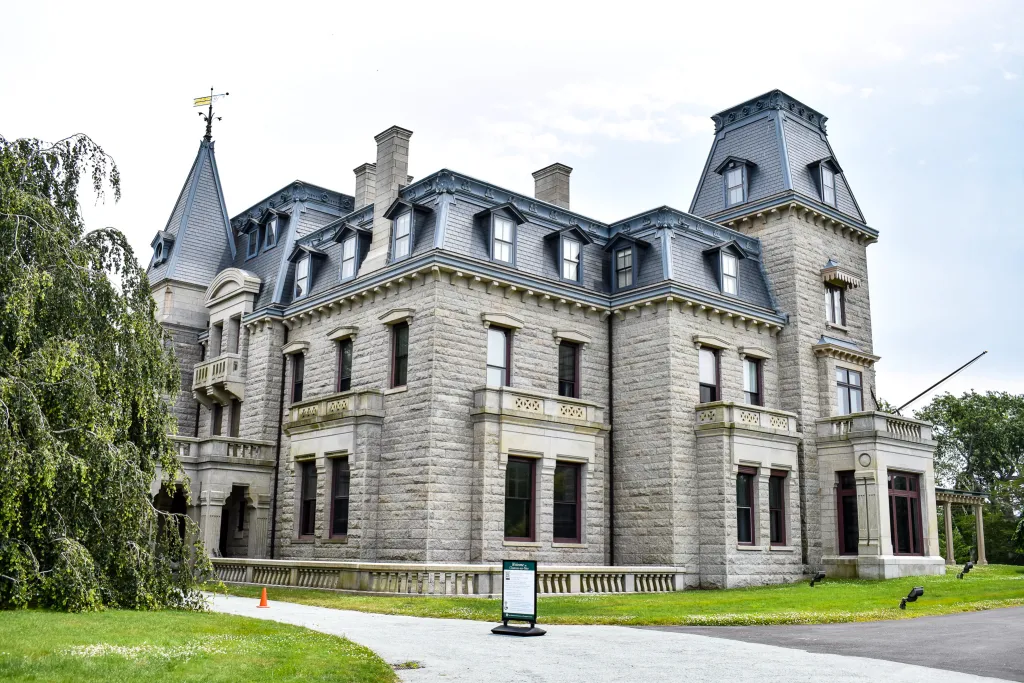
Hudson Valley & Yonkers: Quiet Power and Prestige
For more intimate and refined scenes, the crew headed to the Hudson Valley and Yonkers. Lyndhurst Mansion in Tarrytown became Aurora Fane’s family home, and even served as the carriage house for the New York Globe newspaper office. Its Gothic Revival architecture brings a different mood to the show — more serene and understated — in contrast to the Russells’ bold decor.
In Yonkers, the Glenview Mansion, part of the Hudson River Museum, was used for interiors of Mrs. Astor’s home. Its richly furnished drawing rooms and views of the Hudson made it a perfect fit for one of the most powerful women in The Gilded Age.
Fictional Castles with Real Foundations
Season 3 introduced the fictional Sidmouth Castle, set in the English countryside. While the castle itself is a blend of visual effects and fantasy, it draws inspiration from several real-world estates, including those in Long Island and Newport. It’s a great example of how the show uses existing historic architecture as a launchpad for creating something entirely new.
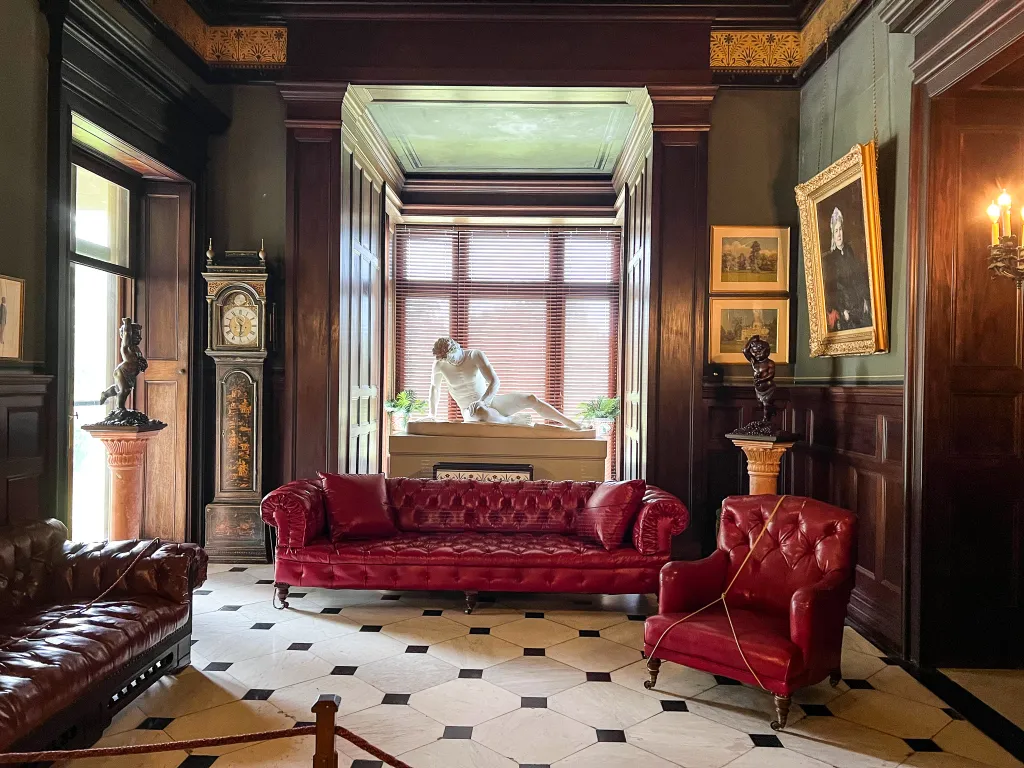
Walk in Their Footsteps
Fans of The Gilded Age don’t have to settle for the screen. Many of these filming locations are open to the public and easily visited on a long weekend. Start with a self-guided tour through Troy’s historic streets, then head down to the Hudson Valley for a taste of quiet country luxury at Lyndhurst. And finally, lose yourself in the marble halls of Newport’s seaside palaces — where every gilded mirror and chandelier has its own story to tell.
The real magic of The Gilded Age is how it brings history to life not just through costume and drama, but through the very walls and streets that shaped America’s elite. Visiting these locations doesn’t just feel like touring a set — it feels like stepping into the past.

